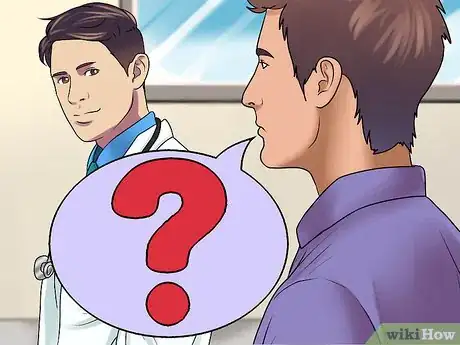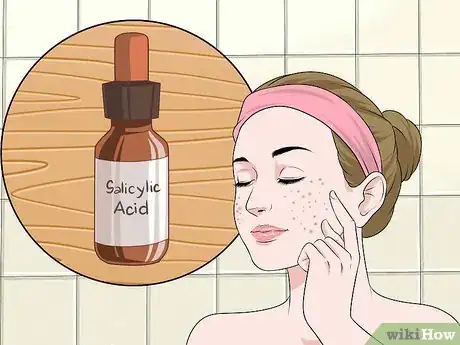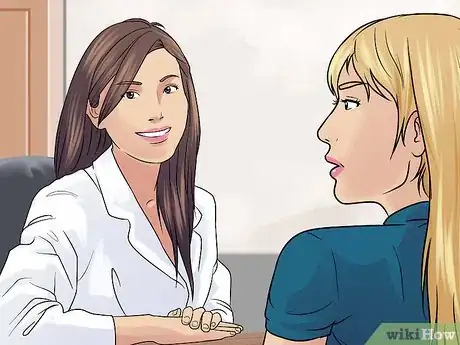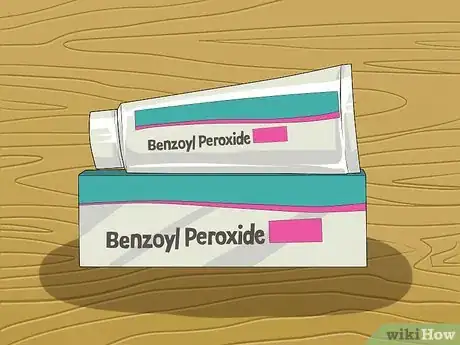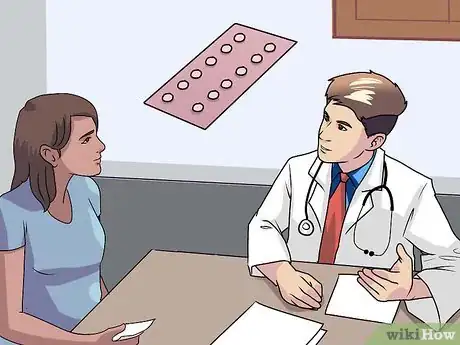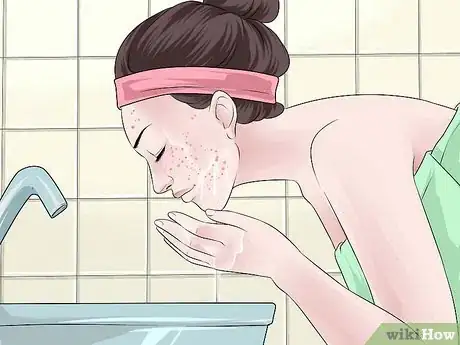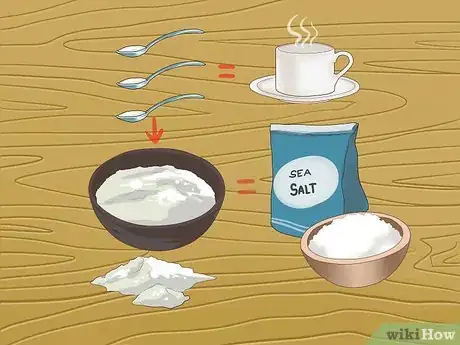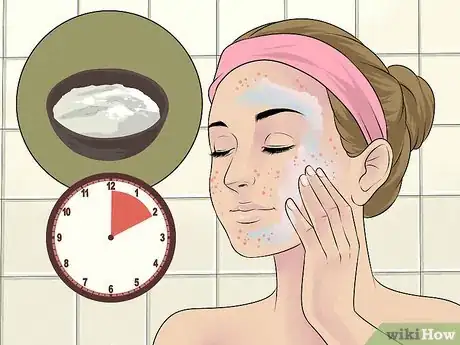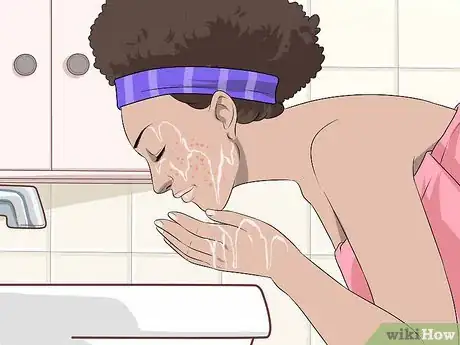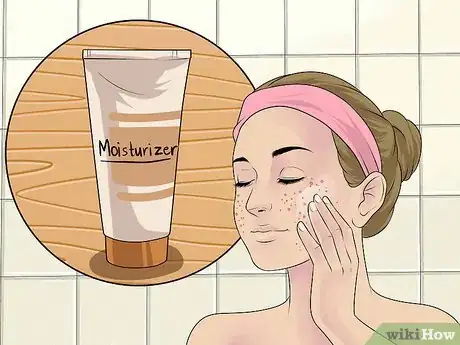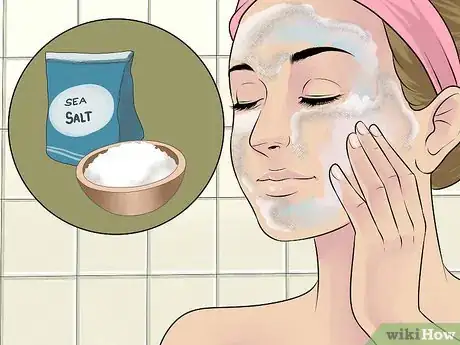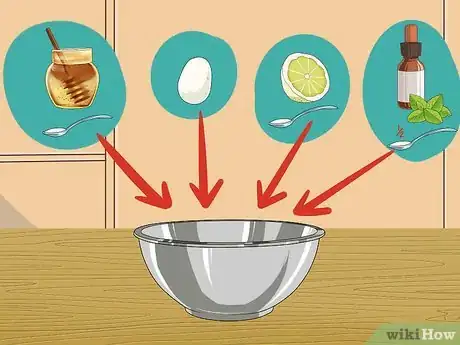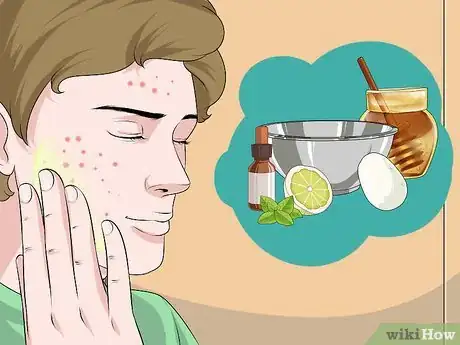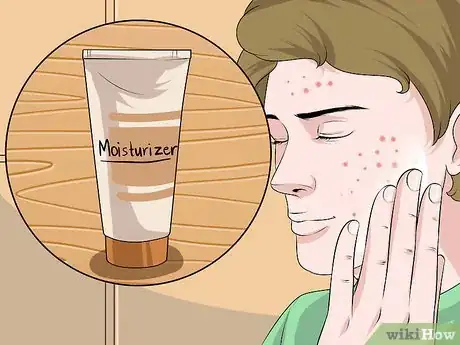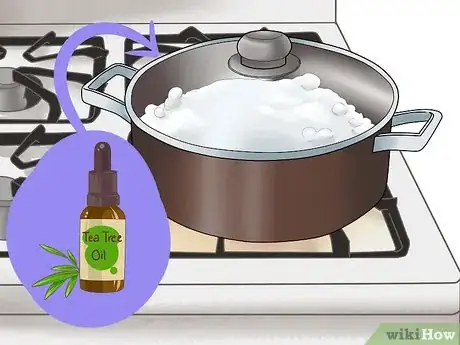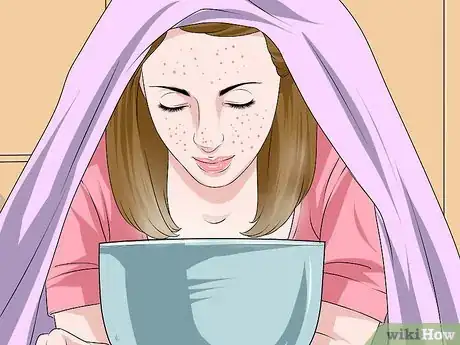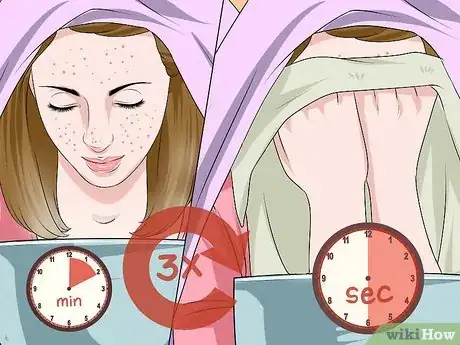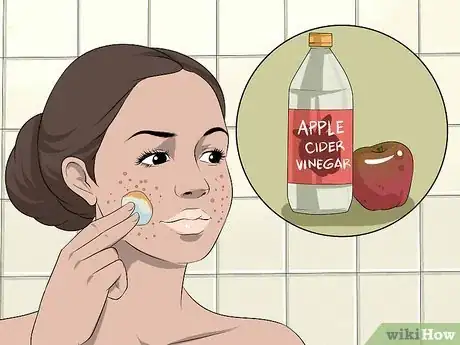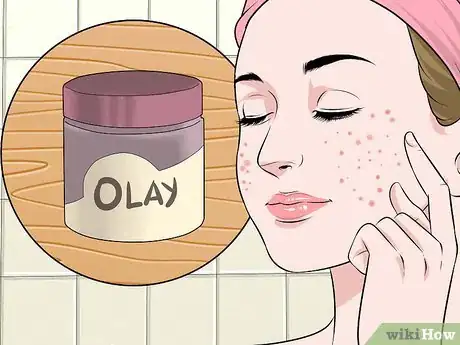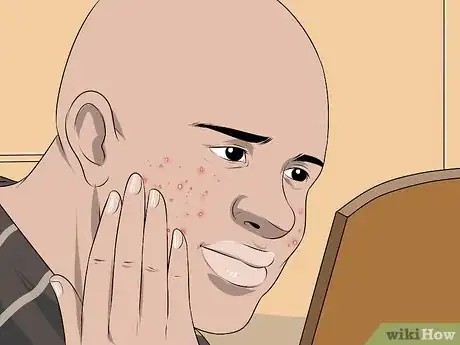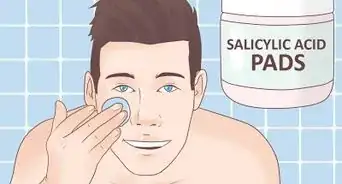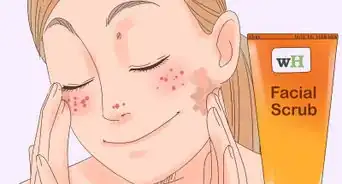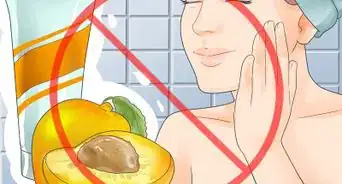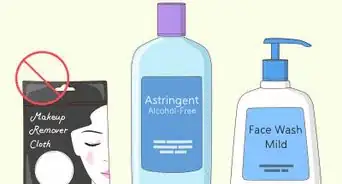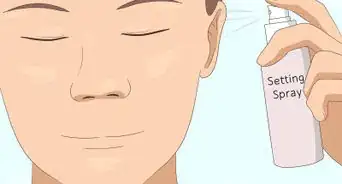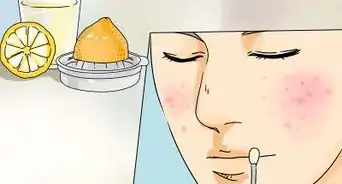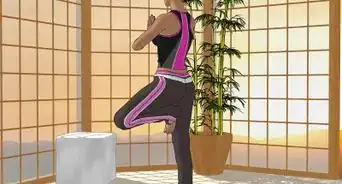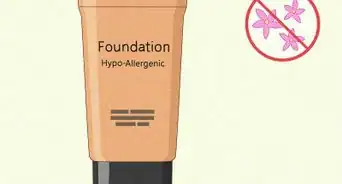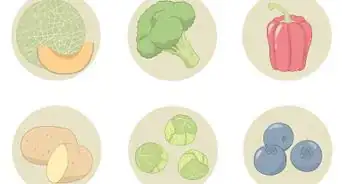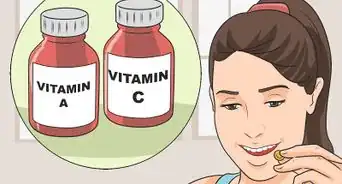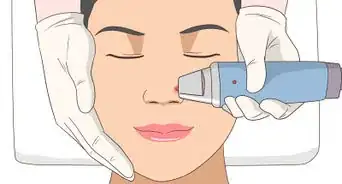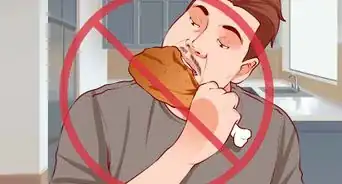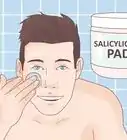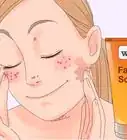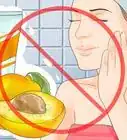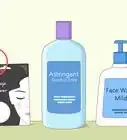This article was medically reviewed by Shari Forschen, NP, MA. Shari Forschen is a Registered Nurse at Sanford Health in North Dakota. Shari has worked in healthcare since 1996 and her expertise lies in acute care bedside nursing on a medical oncology floor. She received her degree from Medcenter one College of Nursing in 2003 and her Family Nurse Practitioner Masters from the University of North Dakota in 2014. Shari is a member of the American Nurses Association.
There are 18 references cited in this article, which can be found at the bottom of the page.
This article has been viewed 112,569 times.
Do you have an untimely spot, pimple, or breakout? If so, drying the blemish out to remove the excess oil can help your skin heal and minimize how noticeable it is. Luckily, this is super easy to do, and there’s no reason you can’t safely treat your skin at home. In this article, we’ll walk you through your potential options—from natural steam treatments to medically-approved products.
Things You Should Know
- In addition to salicylic acid and benzoyl peroxide, applying a sea salt wash (made from salt and water) can help dry out pimples.
- You could apply an herbal facial mask made of honey, egg white, lemon juice, and astringent herbal essential oil before following up with a moisturizer.
- Steam your skin by boiling water in a bowl, adding antiseptic essential oil, and leaning over the mixture with a towel over your face and the bowl.
Steps
Using Medical Treatments
-
1Ask your doctor about retinoid treatments. Topical retinoids are gels or creams that you apply to your face as an acne treatment. They are an effective treatment for reducing acne. These medications require a prescription from your doctor or dermatologist.[1]
- You will need to apply the medicine three times per week at first and then work up to applying it once per day as your skin adjusts to it.
- The medicine will prevent your hair follicles from becoming clogged, which is a common cause of acne.
-
2Use salicylic acid products. Salicylic acid is one of the best products to help treat acne and dry out pimples. It helps to dry out the oils that cause the pimples. Look for products that have salicylic acid in them, including over the counter facial products.Advertisement
-
3Discuss antibiotics with your doctor. If your acne is really red and irritated, then your doctor may decide to prescribe an antibiotic. Antibiotics are often combined with other medications such as retinoids or benzoyl peroxide products to help clear up and prevent infections caused by acne.[4]
- Make sure that you use the antibiotic exactly as instructed by your doctor. Improper use of antibiotics can lead to antibiotic resistant infections.
-
4Try benzoyl peroxide products. Benzoyl peroxide is a substance that eliminates the bacteria on the face that causes acne. It also helps remove excess oils as well as dead skin on your face, which will dry out the pimples quickly. Over the counter products have benzoyl peroxide in concentrations of 2.5% to 10%. Look for one with a concentration that matches the severity of your pimple.
-
5Consider oral contraceptives. If you are female, then you can also consider taking an oral contraceptive to help dry out pimples and fight acne. Oral contraceptives are often effective at treating acne, but talk with your doctor about the potential side effects of these medications.[7]
- If you already take birth control, then consider asking your doctor about switching to one that will help with acne as well, such as Yaz, Ortho-Tricyclen, or Estrostep.
-
6Cleanse your face. Although it is not a medical treatment option, it is important to wash your face twice a day. This will help dry out the pimples you have as well as prevent any more from cropping up.
- Always use gentle pressure when you cleanse your face to avoid hurting your skin.
- You should also wash your face after any intense activity that causes you to sweat a lot. Sweat that is left on your skin causes the oils to build up on your face and cause pimples.[8]
- You can make your own oil-based cleanser. Use an ounce of organic oil, such as hemp seed oil, sunflower oil, shea butter, or castor oil. Add 3-5 drops of an anti-bacterial or antiseptic essential oil to help fight natural bacteria that can lead to pimples. Try tea tree,[9] [10] lavender, oregano, rosemary,[11] or frankincense. Mix the oils and store the oil mixture in a sealable container. Just make sure you keep it away from light.
Making a Sea Salt Wash
-
1Make the solution. A great way to dry out pimples is to use a sea salt face wash. This can work as an overall mask or to treat individual problem areas. Boil some water and then remove from heat. Once it has cooled some, measure three teaspoons of hot water into a bowl and add one teaspoon of sea salt. Stir them together until the sea salt dissolves.
- Make sure you get sea salt instead of iodized salt. Sea salt is better for the skin.
- You can make more of this is you want by increasing the amount of water and salt.[12]
-
2Apply the wash. Once the salt is dissolved, you can apply the mixture to your face. Gently cup the solution in your hand and rub the liquid on your face. Avoid getting the mixture in your eyes because the salt will sting. Leave the mixture on for 10 minutes.
- Don't leave it on longer than the required 10 minutes because it will dry out your skin too much.
- If you want, you can also just treat problem areas with the wash instead. Take a Q-tip or cotton ball and soak it in the wash. Apply that directly to the problem pimples to get the same effect.[13]
-
3Rinse your face. Once the 10 minutes are up, rinse the wash off your face with lukewarm water. Make sure you avoid letting the wash run into your eyes. After it's gone, pat your face dry with a soft cloth towel.
-
4Apply moisturizer. After you have washed and dried your face, you need to apply moisturizer to avoid excessive dryness. Make sure it is a non-comedogenic moisturizer, such as Clinique, Olay, Cetaphil, and Neutrogena.[14]
- Don't overuse this method. One to two times a day is enough to work. If you do it more than that, you could dry out your skin too much, which can cause skin irritation and other skin problems.
-
5Make a sea salt paste. In addition to the wash, you can also make a sea salt paste for your face. This can be used on problem pimples to help dry them out and heal them faster. For this, use one teaspoon of salt to one teaspoon of hot water. Let the salt dissolve a little in the water and, while it is still kind of thick, apply the mixture with a Q-tip to problem pimples.
Making an Herbal Mask
-
1Mix the mask. An herbal facial mask can help clean, heal, and tighten your skin as well as dry out pimples. The key is to use astringent herbs that also have antibacterial qualities. For the base of your mask, mix together:
- 1 tablespoon of honey, which has antibacterial, astringent, and healing qualities
- 1 egg white, which acts as a thickener for the mask
- 1 teaspoon of lemon juice, which provides a slight whitening agent as well as acts as an astringent
- ½ teaspoon of an astringent herbal essential oil that also has antibacterial and anti-inflammatory properties, such as peppermint, spearmint, lavender, calendula, or thyme
-
2Apply the mask. Once you have all these ingredients mixed, dip your fingers into the mixture and apply it all over your face. Leave it on for 15 minutes or until it dries. Rinse the mask off with warm water and a soft cloth.
- You can treat your entire face or just treat individual pimples to dry them out. Use a Q-tip to spread the mixture over individual problem pimples.
-
3Use moisturizer. After you get the mask off, gently dry your face with a soft towel. Then, apply a non-comedogenic moisturizer. Popular brands of these moisturizers include Olay, Clinique, Neutrogena, and Cetaphil.
- There are other good moisturizers, so you can try more. Just make sure they say non-comedogenic on the label.[17]
Using a Steam Treatment
-
1Boil water. To start this treatment, fill a medium sized pot full of water and let it come to a rolling boil. Carefully, remove this water from heat and pour it into a bowl, filling it about 3/4 the way up. To this mixture, add five drops of one of the antiseptic essential oils, such as tea tree, lavender, frankincense, rosemary, or oregano oil. Stir it in.
- If you don't have any oil on hand, you can add 1 teaspoon of dried oregano, lavender, or rosemary.
-
2Lean over the steam. Once the water has cooled a bit but it still steaming, grab a towel and sit in front of the table where you placed the bowl. Lean your face over the bowl, staying a foot to a foot and a half away from the bowl, and place the towel over your head and the bowl.
- This creates an enclosed area for the steam to collect around your face. This will help open up your pores and the oils will treat your skin.
- Make sure you stay far enough back from the steam. You don't want to burn your face. [18]
-
3Alternate to cool. Stay under the towel in the steam for 10 minutes. After this, wet a soft wash cloth with cool water and cover your face for 30 seconds. After this, return to the steam treatment. Repeat this three times, ending on the cool cloth treatment.
- Transitioning between hot and cold helps contract and expand your pores, which will help tone your skin and improve circulation.
- As you go between hot and cold, the water will get cooler. You may need to move closer to the water as the water cool. Always stay at a distance that is comfortable for your skin that won't burn it.[19]
-
4Use an astringent. Astringents are liquids you put on your skin that can draw together your facial tissues, help dry your skin, and help reduce inflammation. There are a number of herbs, teas, and other liquids that act as astringents when applied to your face. Use a cotton ball or Q-tip soaked with the astringent to apply it directly to your pimple.
- Some good astringent options include teas, such as black, green, chamomile, sage, and yarrow, undiluted lemon juice, and essential oils, such as boswellia, tea tree, sage, juniper, grapeseed, rose, oak bark, lemon, lime, orange, and willow bark, and apple cider vinegar.[20]
- Don't over use this method because these astringents have intense drying power. If you use them too much, you can increase the possibility of more pimples and even skin damage.
-
5Apply moisturizer. Once you have cleaned and use astringent, you need to protect your skin by using a moisturizer. You can use one of the non-comedogenic primary oils by itself as a moisturizer. You can also use a store bought non-comedogenic moisturizer.
- Common brands that are non-comedogenic include Neutrogena, Olay, and Cetaphil. Always check the label to see if it is non-comedogenic.[21]
- Repeat the steam method every three to four days.
Understanding Acne
-
1Learn about mild acne. Mild acne is the form of acne that can be easily treated at home. Mild acne is the form of acne where you only have a few mildly inflamed or irritated pimples, usually less than 20, as well as fewer than 20 non-swollen whiteheads or blackhead.[22]
- If this describes your acne, you can treat it at home by practicing good cleansing techniques as well as using masks, astringents, and other home remedies.
- The presence of more than 20 inflamed pimples or pimples that cover the majority of your face is a sign of moderate to severe acne, which needs to be treated by a dermatologist.[23]
-
2Understand the role of oil. Although it may seem counterproductive, oil products will actually help fight pimples and dry them out, especially when mixed with the right additional ingredients. The natural oils produced by your face are also important to help moisturize your skin and help fight pimples. Oil cleansers are used to help when your skin produces too much.[24]
- The two different oils from your face and cleanser react to one another and dry each other out.
-
3See a dermatologist. If you are still having issues with your skin after trying multiple home treatments, you should see a dermatologist, a skin doctor who will help analyze what is going wrong with your skin. If your skin gets worse after using any home remedy to dry out your pimple, you should also see a dermatologist.
- She will be able to determine a skincare regimen, which may include medication or medicated face products, that may help your skin more than home remedies to dry out pimples.[25]
Expert Q&A
-
QuestionWhat dries out pimples?
 Laura MartinLaura Martin is a Licensed Cosmetologist in Georgia. She has been a hair stylist since 2007 and a cosmetology teacher since 2013.
Laura MartinLaura Martin is a Licensed Cosmetologist in Georgia. She has been a hair stylist since 2007 and a cosmetology teacher since 2013.
Licensed Cosmetologist You don't necessarily want to dry out a pimple, and even if you do, you may still have inflammation. Ingredients like witch hazel and tea tree oil will help to counteract oiliness while also reducing irritation and redness.
You don't necessarily want to dry out a pimple, and even if you do, you may still have inflammation. Ingredients like witch hazel and tea tree oil will help to counteract oiliness while also reducing irritation and redness.
References
- ↑ http://www.mayoclinic.org/diseases-conditions/acne/basics/treatment/con-20020580
- ↑ http://www.mayoclinic.org/diseases-conditions/acne/in-depth/acne-products/ART-20045814?p=1
- ↑ https://www.nlm.nih.gov/medlineplus/druginfo/meds/a607072.html
- ↑ http://www.mayoclinic.org/diseases-conditions/acne/basics/treatment/con-20020580
- ↑ http://www.mayoclinic.org/diseases-conditions/acne/in-depth/acne-products/ART-20045814?p=1
- ↑ https://www.nlm.nih.gov/medlineplus/druginfo/meds/a601026.html
- ↑ http://www.mayoclinic.org/diseases-conditions/acne/basics/treatment/con-20020580
- ↑ http://www.webmd.com/skin-problems-and-treatments/acne/acne-vulgaris-prevention
- ↑ http://www.ncbi.nlm.nih.gov/pubmed/20175810
- ↑ http://www.mayoclinic.org/diseases-conditions/acne/basics/alternative-medicine/con-20020580
- ↑ http://www.ncbi.nlm.nih.gov/pubmed/17893831
- ↑ http://www.webmd.com/beauty/face/exfoliating-facial-sea-salt-scrub
- ↑ http://www.webmd.com/beauty/face/exfoliating-facial-sea-salt-scrub
- ↑ http://www.drugs.com/mcd/acne
- ↑ http://www.ncbi.nlm.nih.gov/pubmed/15689218
- ↑ http://www.webmd.com/beauty/face/exfoliating-facial-sea-salt-scrub
- ↑ http://www.drugs.com/mcd/acne
- ↑ http://www.emedicinehealth.com/sinus_infection/page7_em.htm
- ↑ http://www.emedicinehealth.com/sinus_infection/page7_em.htm
- ↑ http://www.ncbi.nlm.nih.gov/books/NBK92761/
- ↑ http://www.drugs.com/mcd/acne
- ↑ https://www.merckmanuals.com/professional/dermatologic-disorders/acne-and-related-disorders/acne-vulgaris
- ↑ http://www.webmd.com/skin-problems-and-treatments/acne/ss/slideshow-acne-dictionary
- ↑ http://www.ncbi.nlm.nih.gov/pmc/articles/PMC2835893/
- ↑ http://www.drugs.com/mcd/acne
About This Article
To dry out a pimple, start by mixing 1 teaspoon of sea salt with 3 teaspoons of boiling water that’s been cooled slightly. Once the salt dissolves, apply the mixture to your pimple and let it sit for 10 minutes. Then, rinse and dry your face before putting on a moisturizer that's specially formulated not to clog your pores. Alternatively, you can mix honey, egg white, lemon juice, and an astringent essential oil, like peppermint or lavender, to make an herbal face mask. Just put the mixture on your face for 15 minutes, then rinse it off and apply your moisturizer. For information from our Medical reviewer on how to give yourself a steam treatment to help dry out your pimple, read on!
